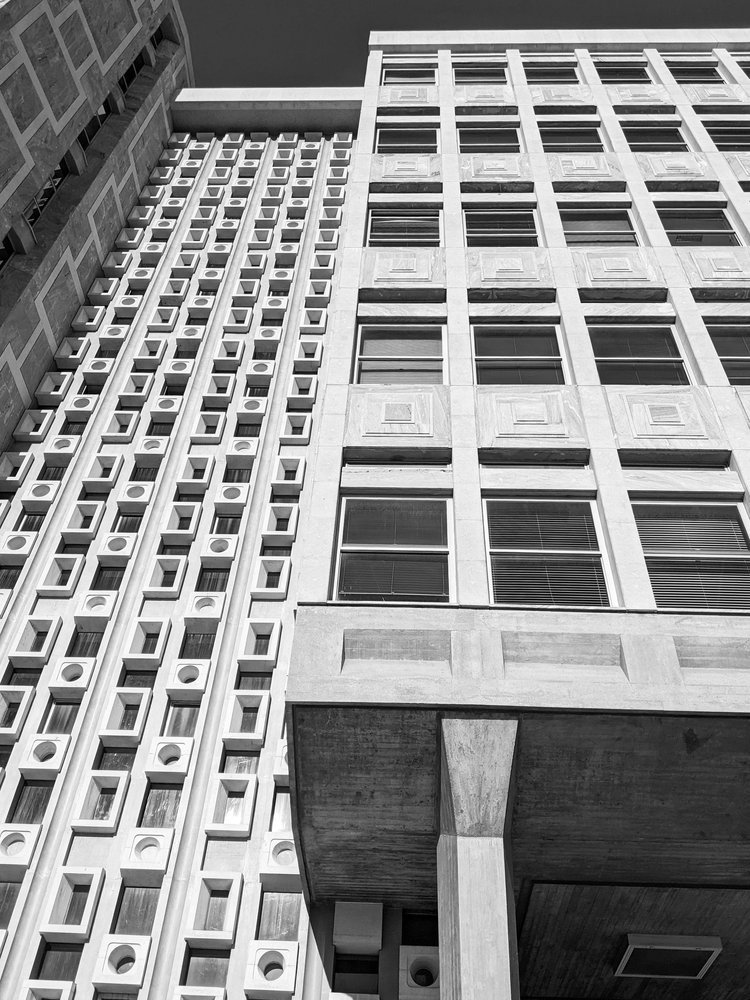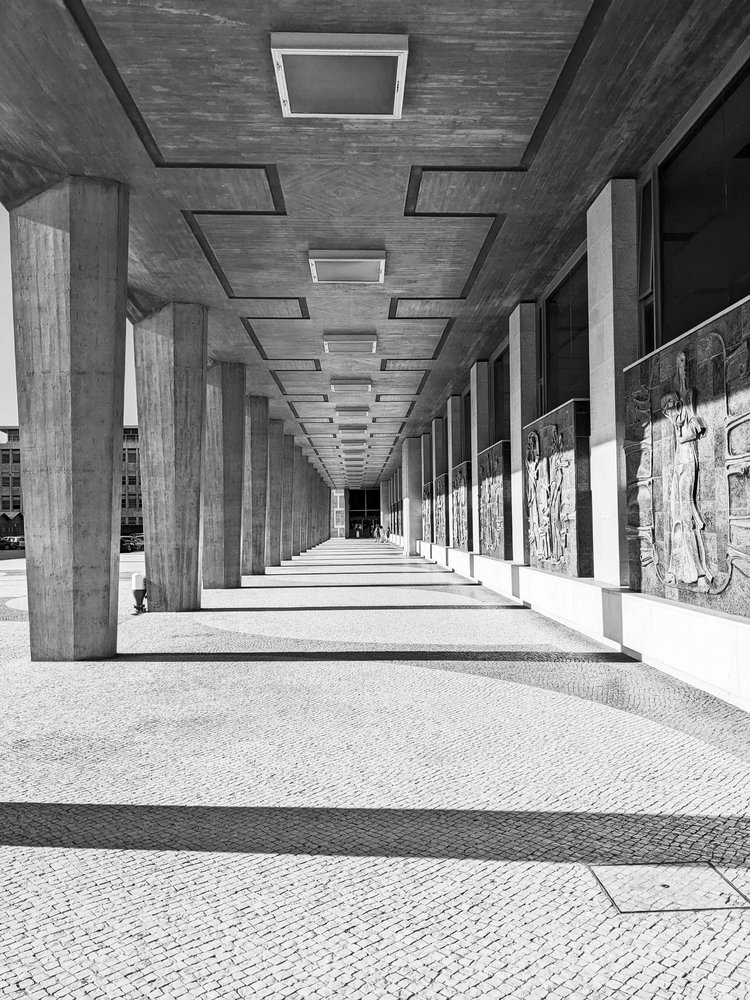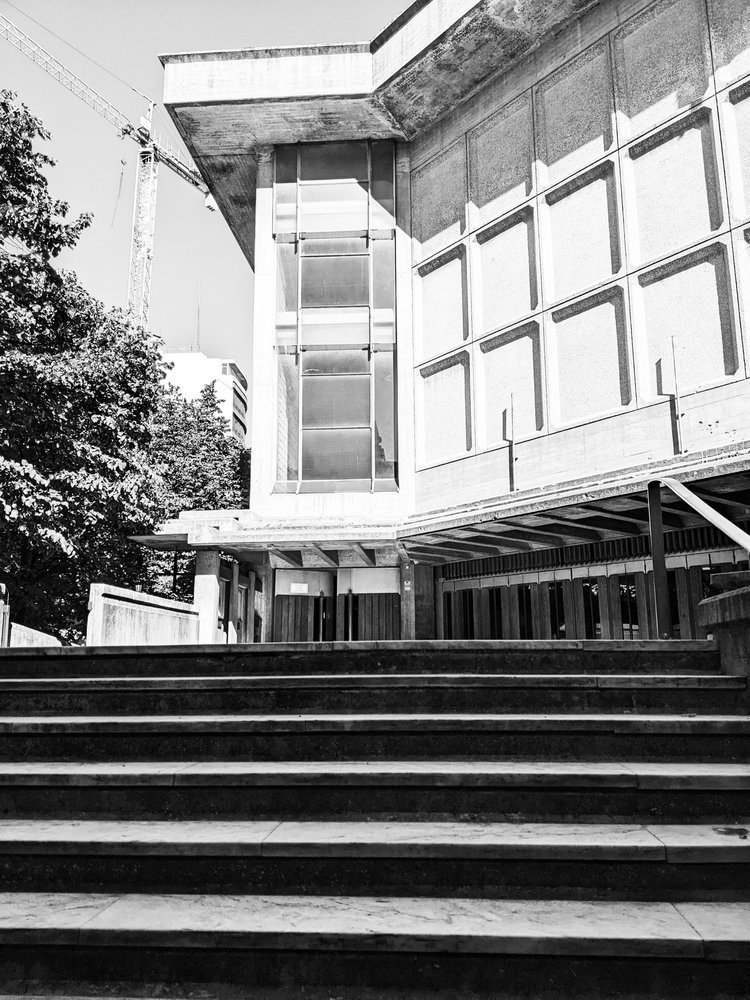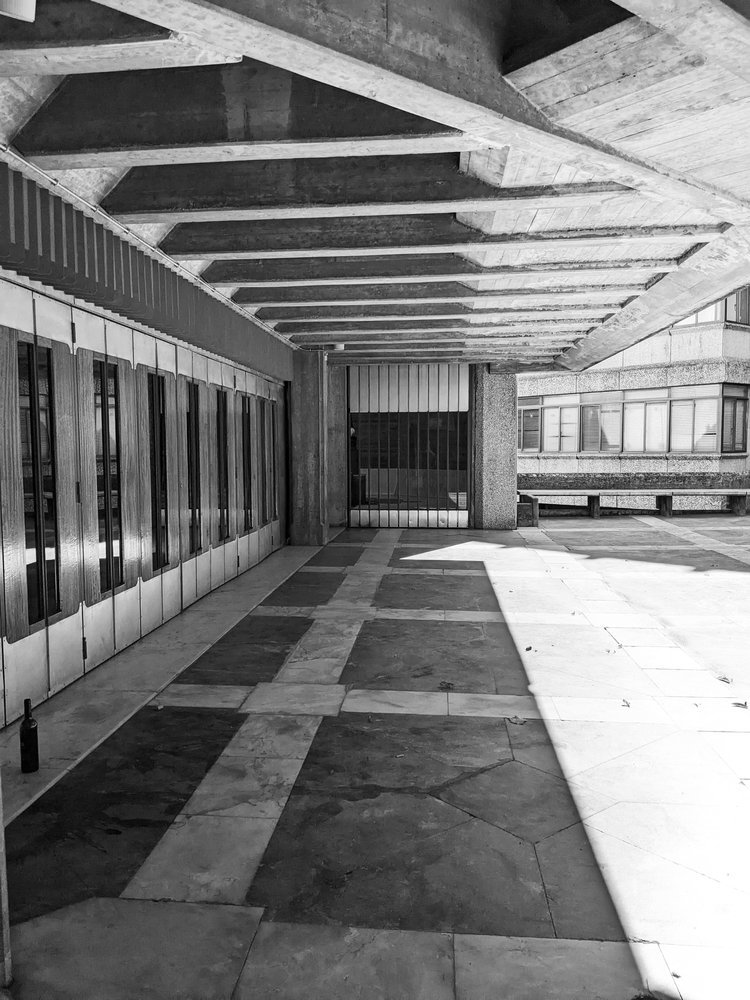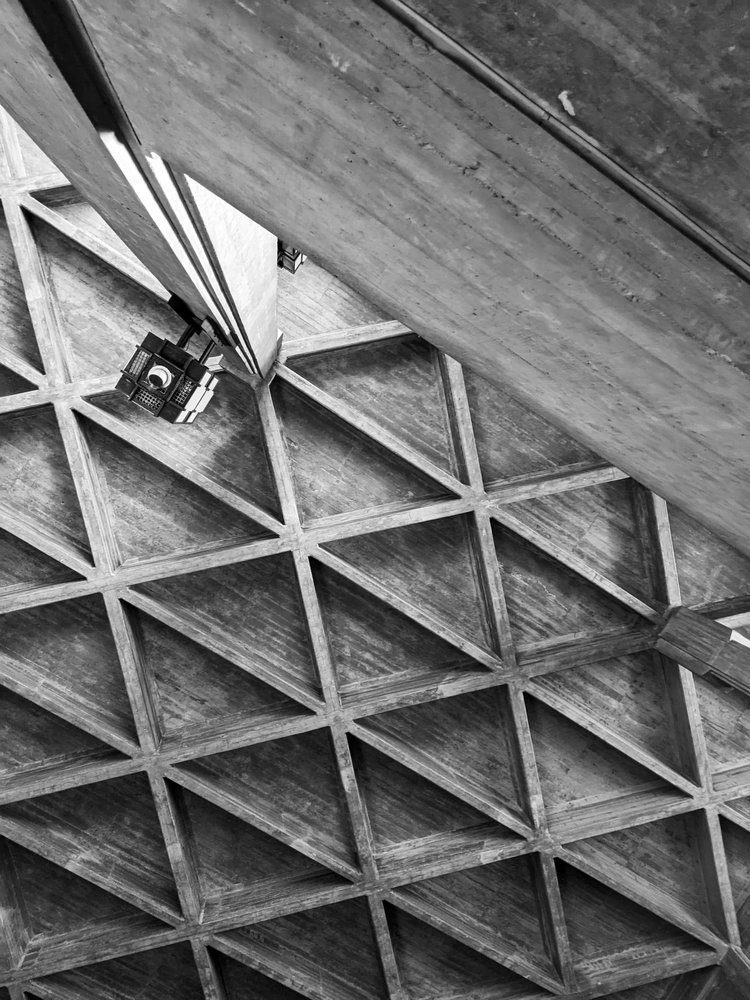as a textile designer, i spend a lot of time thinking about surface — how it behaves, what it suggests, and how it feels. when i travel, i often photograph brutalist buildings not just for their form, but for their surface logic — how repetition, rhythm and materiality work together. the palace of justice in lisbon is one of the most quietly decorative buildings i’ve seen, and it’s shaped a lot of my thinking about how concrete and cloth can speak the same visual language.
it’s been a while since we’ve last embarked on an architectural inspiration journey, but holiday season is coming up, so i thought i’d give you a little tip, to visit a wonderful brutalist building in one of my favourite cities. the city is lisbon, portugal, where i showed you a beautiful church before, and this time we’re going to court! okay, nobody’s going to get sued, we are just going to admire the building. the palace of justice stands as a testament to the unique approach to brutalism by the portuguese. join me on a short walk around this gem!
the building was designed by januário godinho and joão henrique de breloes andresen and built between 1962 and 1970. it is in the SOS brutalism database but thankfully it is not currently in danger as it is used as the main court. it stands at the head of parque eduardo VII, a peaceful, green patch in the centre of the city.
it has everything a brutalist marvel should have - the skillful blending of monumental proportions and robust materials - it is a long building with concrete columns supporting its cantilevered facade on all sides. because of that, it looks lightweight that is slightly lifted off the ground, and it does have this uniquely portuguese take on brutalism: the concrete facade here is not raw or imposing - it is incredibly decorated, light and airy, punctuated by geometric patterns and rhythmic textures, corresponding to the delightful tiled surfaces this country is so famous for.
the structure and the shape of the supporting columns create an interesting rhythm, and it is this frequency and rhythm that i find so relaxing. the concrete here is not raw, it is processed and organised into intricate, detailed patterns that pierce through the facade.
obviously it is the patterns i’m attracted to as a textile designer. the tile references in particular have a connection to my favourite way of creating geometric patterns and i love this building for showing that brutalism can be playful and decorative too. my main aim has always been to infuse this modernist spirit into textile designs and create a connection between the realms of architecture and interior decor. i want to bring it inside and bridge the gap between the monumental and the intimate, to translate the feeling of calm i get from these buildings to the feeling of calm at home.
i hope that you get to visit this beautiful building, in the lisbon sun it shines white, with the shadows adding an additional depth to this textured facade. and i hope you’re not tired of my ramblings yet, i always think that every building explains a little bit more about my mission!
if you’re interested in how architecture and surface design connect — or how brutalist texture can inspire calm, not coldness — explore how these ideas translate into our BÉTON collection or get your own block-printed textile pieces. these buildings don’t just inspire what I make — they shape how I think about design altogether.



